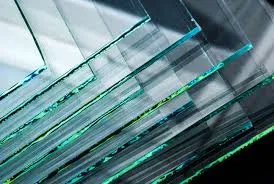IR Reflective Coating for Glass Enhancing Energy Efficiency and Comfort
In recent years, the quest for energy efficiency and comfort in buildings has driven the development of advanced materials and coatings. One such innovation is the IR (infrared) reflective coating for glass, which has gained significant popularity in both commercial and residential applications. This article explores the benefits, applications, and technology behind IR reflective coatings, highlighting their role in modern architecture.
What is IR Reflective Coating?
IR reflective coatings are specialized thin films applied to glass surfaces. These coatings are designed to reflect a significant portion of the infrared spectrum while allowing visible light to pass through. This unique property helps to reduce heat transmission through the glass, thereby maintaining a comfortable indoor environment and lowering energy costs associated with heating and cooling.
Benefits of IR Reflective Coating
1. Energy Efficiency One of the primary advantages of IR reflective coatings is their ability to enhance energy efficiency. By reflecting infrared radiation, these coatings minimize heat gain during the summer months and heat loss in the winter. This reduction in thermal transfer can lead to substantial savings on energy bills, as HVAC systems do not have to work as hard to maintain the desired indoor temperatures.
2. Increased Comfort Maintaining a consistent and comfortable indoor temperature is crucial for occupant satisfaction. IR reflective coatings help to reduce hot spots and glare caused by direct sunlight, creating a more pleasant living or working environment. This is particularly beneficial in regions with extreme temperatures, where excessive heat can make indoor spaces uncomfortable.
3. UV Protection In addition to reflecting infrared radiation, many IR reflective coatings also provide protection against harmful ultraviolet (UV) rays. Prolonged exposure to UV radiation can cause fading and damage to furnishings, artwork, and flooring. By incorporating IR reflective coatings, building owners can protect their investments while improving overall indoor comfort.
4. Aesthetic Appeal Modern IR reflective coatings can be engineered to maintain clear visibility while reducing glare. This allows architects and designers to create aesthetically pleasing facades that do not compromise on performance. The coatings come in various shades and opacities, making it easier for designers to match the appearance of different architectural styles.
ir reflective coating for glass
Applications of IR Reflective Coating
IR reflective coatings are versatile and can be applied in various contexts, including
- Commercial Buildings Office buildings, shopping centers, and hotels often utilize IR reflective coatings to enhance energy performance and guest comfort. These coatings reduce the impact of harsh sunlight on workspaces, thereby increasing productivity and reducing ambient temperatures.
- Residential Homes Homeowners seeking to improve energy efficiency are increasingly opting for glass windows and doors with IR reflective coatings. These coatings help maintain a balanced indoor climate while reducing reliance on air conditioning systems.
- Automotive Glass The automotive industry has also adopted IR reflective coatings in windshields and windows to enhance passenger comfort and improve fuel efficiency by decreasing the load on the vehicle's climate control system.
The Technology Behind IR Reflective Coating
IR reflective coatings are typically made from multiple layers of thin films that are engineered at the molecular level. These layers are composed of various materials that work together to reflect infrared radiation while allowing visible light to pass through. The effectiveness of these coatings depends on factors such as thickness, material composition, and the specific wavelengths of light they are designed to reflect.
Conclusion
In summary, IR reflective coatings for glass provide a range of benefits, including energy efficiency, increased comfort, UV protection, and aesthetic appeal. As building owners increasingly prioritize sustainability and occupant comfort, the adoption of these innovative coatings is likely to continue to grow. By integrating IR reflective coatings into building designs, we can create environments that are not only comfortable but also sustainable and energy-efficient, paving the way for a greener future in architecture.
 Afrikaans
Afrikaans  Albanian
Albanian  Amharic
Amharic  Arabic
Arabic  Armenian
Armenian  Azerbaijani
Azerbaijani  Basque
Basque  Belarusian
Belarusian  Bengali
Bengali  Bosnian
Bosnian  Bulgarian
Bulgarian  Catalan
Catalan  Cebuano
Cebuano  Corsican
Corsican  Croatian
Croatian  Czech
Czech  Danish
Danish  Dutch
Dutch  English
English  Esperanto
Esperanto  Estonian
Estonian  Finnish
Finnish  French
French  Frisian
Frisian  Galician
Galician  Georgian
Georgian  German
German  Greek
Greek  Gujarati
Gujarati  Haitian Creole
Haitian Creole  hausa
hausa  hawaiian
hawaiian  Hebrew
Hebrew  Hindi
Hindi  Miao
Miao  Hungarian
Hungarian  Icelandic
Icelandic  igbo
igbo  Indonesian
Indonesian  irish
irish  Italian
Italian  Japanese
Japanese  Javanese
Javanese  Kannada
Kannada  kazakh
kazakh  Khmer
Khmer  Rwandese
Rwandese  Korean
Korean  Kurdish
Kurdish  Kyrgyz
Kyrgyz  Lao
Lao  Latin
Latin  Latvian
Latvian  Lithuanian
Lithuanian  Luxembourgish
Luxembourgish  Macedonian
Macedonian  Malgashi
Malgashi  Malay
Malay  Malayalam
Malayalam  Maltese
Maltese  Maori
Maori  Marathi
Marathi  Mongolian
Mongolian  Myanmar
Myanmar  Nepali
Nepali  Norwegian
Norwegian  Norwegian
Norwegian  Occitan
Occitan  Pashto
Pashto  Persian
Persian  Polish
Polish  Portuguese
Portuguese  Punjabi
Punjabi  Romanian
Romanian  Russian
Russian  Samoan
Samoan  Scottish Gaelic
Scottish Gaelic  Serbian
Serbian  Sesotho
Sesotho  Shona
Shona  Sindhi
Sindhi  Sinhala
Sinhala  Slovak
Slovak  Slovenian
Slovenian  Somali
Somali  Spanish
Spanish  Sundanese
Sundanese  Swahili
Swahili  Swedish
Swedish  Tagalog
Tagalog  Tajik
Tajik  Tamil
Tamil  Tatar
Tatar  Telugu
Telugu  Thai
Thai  Turkish
Turkish  Turkmen
Turkmen  Ukrainian
Ukrainian  Urdu
Urdu  Uighur
Uighur  Uzbek
Uzbek  Vietnamese
Vietnamese  Welsh
Welsh  Bantu
Bantu  Yiddish
Yiddish  Yoruba
Yoruba  Zulu
Zulu 

